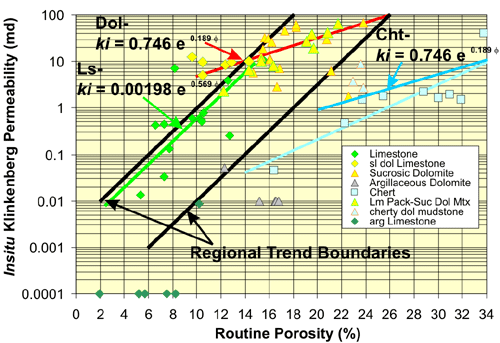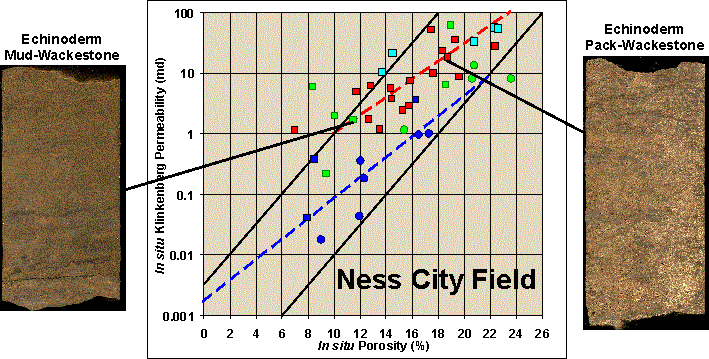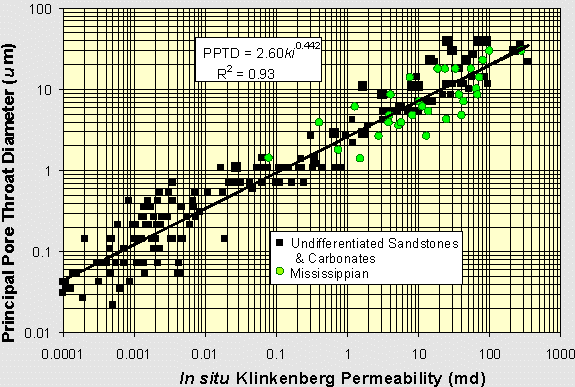 |
|
Kansas Geological Survey Open-file Report 2003-31 |
Wellington West Equations
Wireline log response was able to to identify dolomite, limestone,
and chert facies but could not distinguish lithofacies (mudstone-grainstone).
Permeability-porosity (k-![]() )
trends for cores from eight wells in nearby fields were consistent with regional
Mississippian trends. It was assumed that these trends were most representative
of the Wellington West field. Permeability for the carbonates was predicted
from porosity using:
)
trends for cores from eight wells in nearby fields were consistent with regional
Mississippian trends. It was assumed that these trends were most representative
of the Wellington West field. Permeability for the carbonates was predicted
from porosity using:
| Dolomite: | ki = 0.746 e 0.189 |
| Limestone: | ki = 0.00198 e 0.569 |
Local cherts exhibit a k-![]() trend (light blue line) that is subparallel to the regional chert trend (blue
line). Because of limited local sampling the regional trend was considered
more robust and was utilized for modeling.
trend (light blue line) that is subparallel to the regional chert trend (blue
line). Because of limited local sampling the regional trend was considered
more robust and was utilized for modeling.
| Chert regional | ki = 0.0309 e 0.166
|
| Chert: | ki = 0.000894 e 0.273 |


Permeability and Pore Throats
Though permeability is shown correlated with porosity, variables that control permeability in Mississippian rocks include pore throat size and distribution, grain size distribution, moldic pore size and packing, and moldic pore connectivity. Porosity is only one of the variables controlling permeability and bivariate correlation therefore relies on the correlation between porosity and the other controlling variables. A crossplot of permeability and principal pore throat diameter (PPTD) illustrates the control PPTD exerts on permeability.

|
|
e-mail : webadmin@kgs.ku.edu
Last updated July 2003
http://www.kgs.ku.edu/PRS/publication/2003/ofr2003-31/P2-02.html
